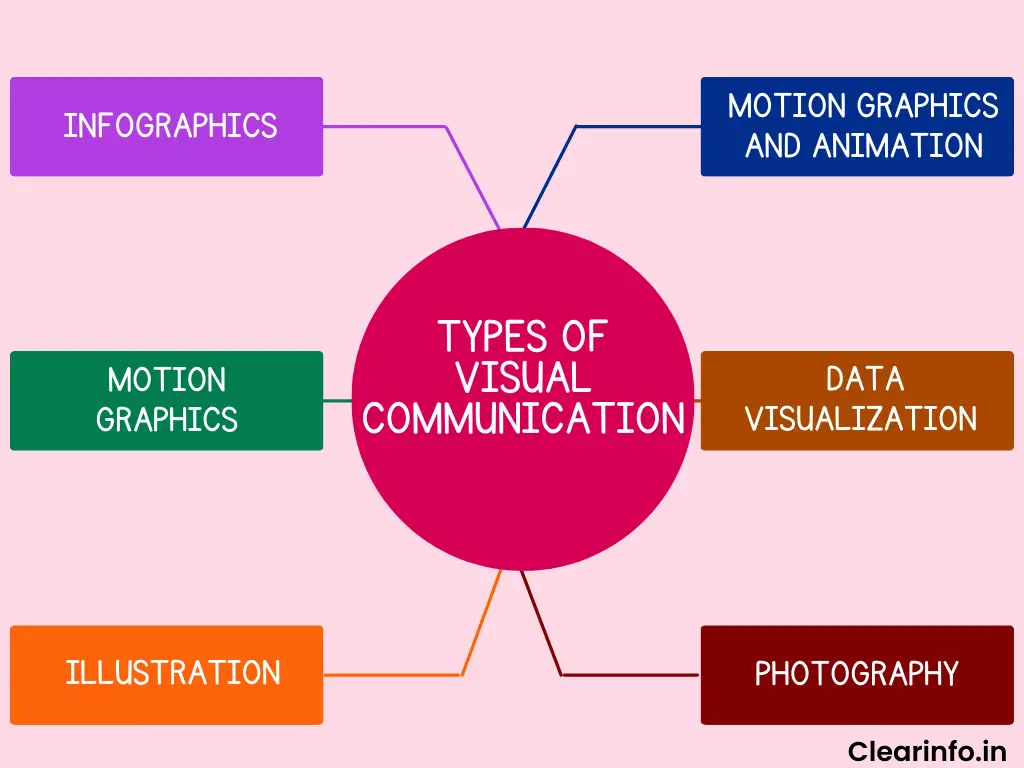Types of Visual Communication

Visual communication encompasses various types of visual media and tools used to convey information, ideas, and messages. Here are some common types of visual communication:
Graphs and Charts: Graphical representations such as bar charts, line graphs, pie charts, scatter plots, and histograms are used to visualize quantitative data and trends. They help in presenting complex numerical information in a clear and concise manner.
Infographics: Infographics combine text, images, and graphics to convey information, statistics, or concepts in a visually appealing and easy-to-understand format. They are often used in marketing, education, and journalism to present data-driven stories or summaries.
Diagrams and Flowcharts: Diagrams and flowcharts use shapes, symbols, and arrows to illustrate processes, workflows, relationships, or hierarchies. They help in breaking down complex concepts into simpler components and visualizing the sequence of steps in a process.
Maps: Maps are visual representations of geographic locations, territories, or spatial data. They are used in navigation, urban planning, demographics, and data analysis to display geographical features, boundaries, and distributions.
Photographs and Images: Photographs and images capture visual representations of people, objects, events, or scenes. They are used in various contexts, including advertising, journalism, storytelling, and design, to evoke emotions, convey messages, and enhance visual appeal.
Icons and Symbols: Icons and symbols are simplified graphical representations of objects, concepts, or actions. They are widely used in user interfaces, signage, wayfinding, and instructional materials to convey information quickly and universally.
Videos and Animations: Videos and animations use moving images, sound, and narration to tell stories, demonstrate processes, or explain concepts. They are effective for engaging audiences, demonstrating products, and providing step-by-step instructions.
Typography and Text Design: Typography involves the design and arrangement of text elements, including fonts, sizes, styles, and layouts. It is used in graphic design, advertising, branding, and publishing to enhance readability, convey tone, and create visual hierarchy.
Interactive Visuals: Interactive visuals allow users to engage with content and manipulate data dynamically. Examples include interactive maps, data visualizations, multimedia presentations, and web-based applications that enable users to explore information in real-time.
Visual Presentations: Visual presentations use slides, images, and multimedia content to deliver presentations or lectures. Presentation software such as PowerPoint, Keynote, and Prezi allows presenters to incorporate visuals, animations, and multimedia elements to communicate ideas effectively.
These are just a few examples of the diverse range of visual communication methods and tools used in various fields and applications. Effective visual communication relies on choosing the appropriate type of visual media to convey the intended message clearly, engagingly, and memorably.
Thank you,